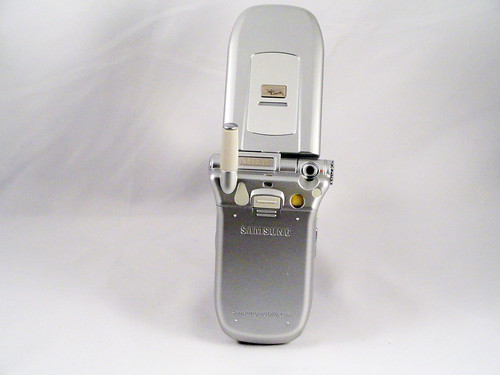I believe that this phone shows Samsung's first early efforts to break away from making generic phones that sold primarily on price to try and introduce some of its own innovations and sell phones based on novel functionality (judging from the generic silver color and it's overall still generic look, differentiation by industrial design had not yet become a priority). The main innovation here is the swiveling camera. The little camera is placed at the pivot of the hinge for the phone, and placed on a small turret that moves from pointing forward to pointing backward at the holder. This is a variant on what Nokia was doing with the 3250, which came out a year later, so clearly at the time there was a perception that: cameras are important, but including more than one camera is expensive, and people want to point the camera at both themselves and at other things. Thus, one solution is to have a camera that pivots from front-facing to back-facing, so that the LCD display can continue to be used. Another is to have two LCD displays--one facing each direction--so that the phone phone can be moved. Companies tried both kinds of designs, but this is a great example of the somewhat rarer first idea. Did people actually use it this way? I suspect not. Frankly, I suspect there was a lot of wishful thinking about how carriers were going to drive the kind of high bandwidth use that this kind hardware functionality implied, and the carriers never priced that bandwidth low enough, or designed the functionality well enough, for there to be much adoption.
A phone a day: Samsung SPH-a600 (2005)
No TrackBacks
TrackBack URL: http://orangecone.com/cgi-bin/mt/mt-tb.cgi/385





